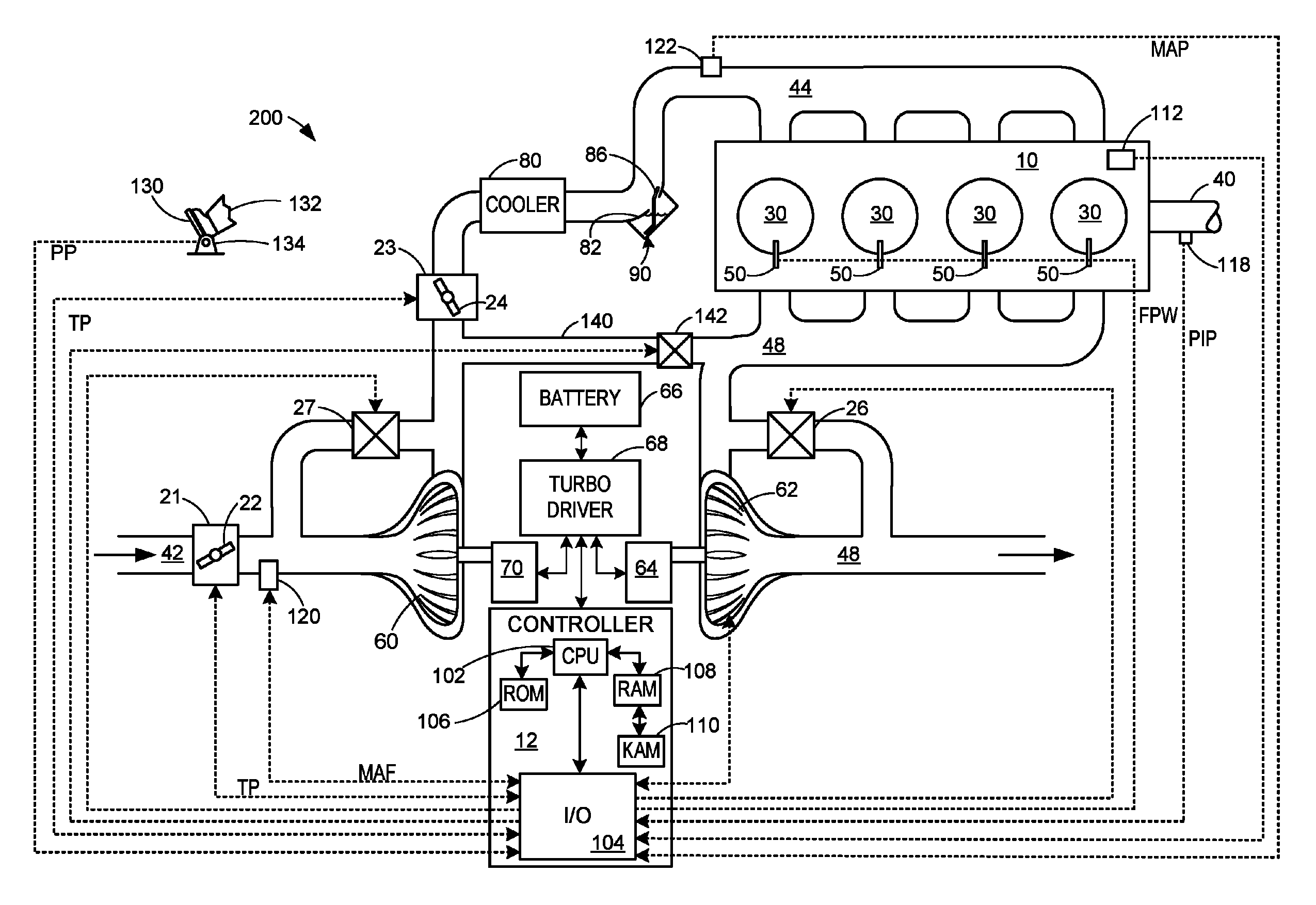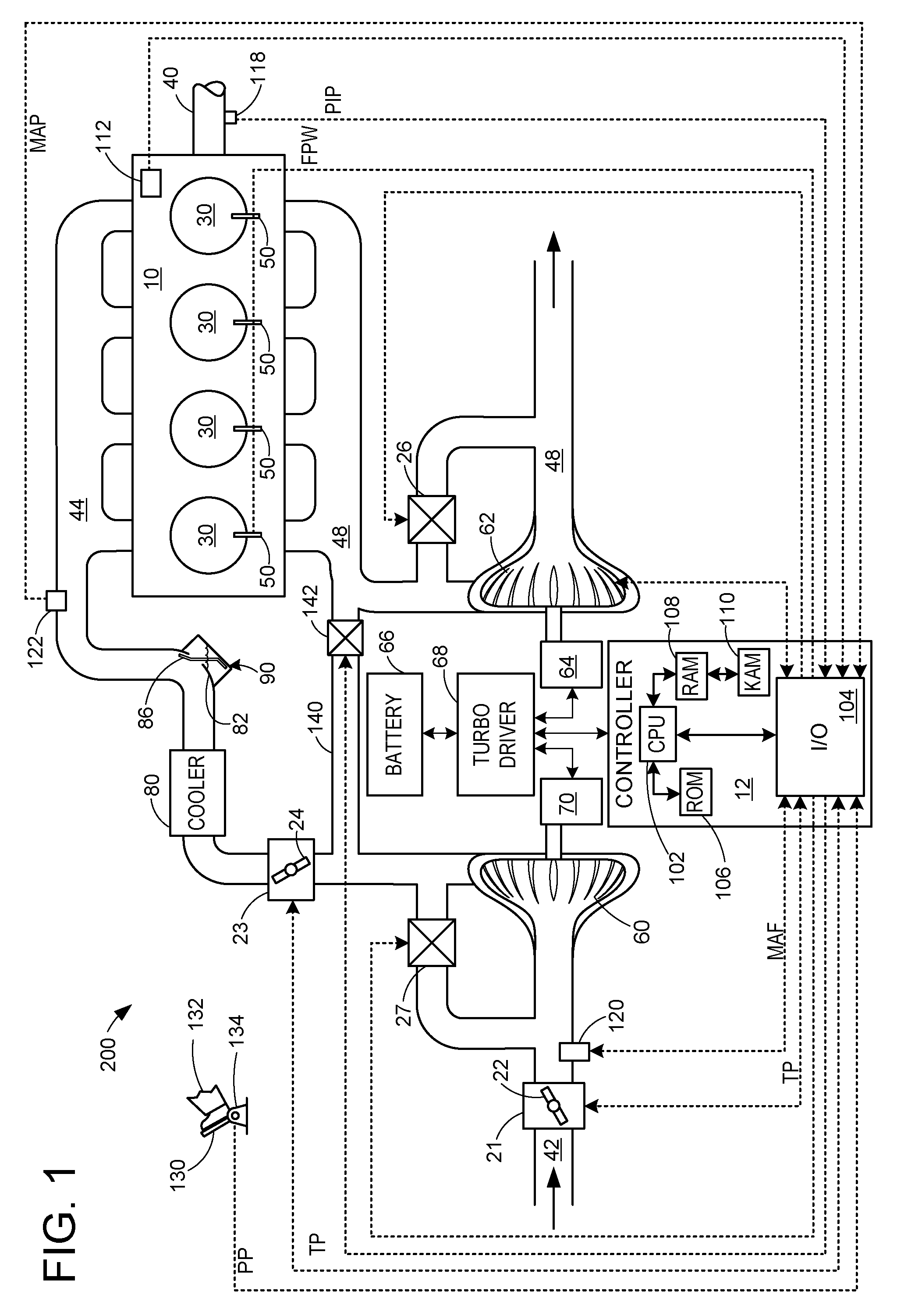Condensation trap for charge air cooler
a charge air cooler and condensate trap technology, applied in the field of charge air coolers, can solve the problems of loss of torque and engine speed, incomplete combustion of fuel, engine misfire, etc., and achieve the effect of reducing the amount of condensate reaching the combustion chamber
- Summary
- Abstract
- Description
- Claims
- Application Information
AI Technical Summary
Benefits of technology
Problems solved by technology
Method used
Image
Examples
Embodiment Construction
[0011]The following description relates to embodiments of a condensation trap with a charge air cooler in a turbocharged engine for reducing the rate at which condensation enters the combustion chambers of the engine. The condensation trap may be coupled to a bend in an outlet duct, and airflow in the outlet duct may be in communication with the condensation trap via an opening in an outside surface of the bend of the outlet duct. The bend in the outlet duct may encourage water droplets (e.g., condensate) in the airflow to enter the condensation trap. Furthermore, the condensation trap may comprise a reservoir for collecting the condensate and a tube for releasing the condensate back to the outlet duct. Based on engine operating conditions, the collected condensate may be temporarily stored in the reservoir to a greater extent under some operating conditions as compared to others. For example, during transient high load engine conditions when a greater amount of condensate is discha...
PUM
 Login to View More
Login to View More Abstract
Description
Claims
Application Information
 Login to View More
Login to View More - R&D
- Intellectual Property
- Life Sciences
- Materials
- Tech Scout
- Unparalleled Data Quality
- Higher Quality Content
- 60% Fewer Hallucinations
Browse by: Latest US Patents, China's latest patents, Technical Efficacy Thesaurus, Application Domain, Technology Topic, Popular Technical Reports.
© 2025 PatSnap. All rights reserved.Legal|Privacy policy|Modern Slavery Act Transparency Statement|Sitemap|About US| Contact US: help@patsnap.com



